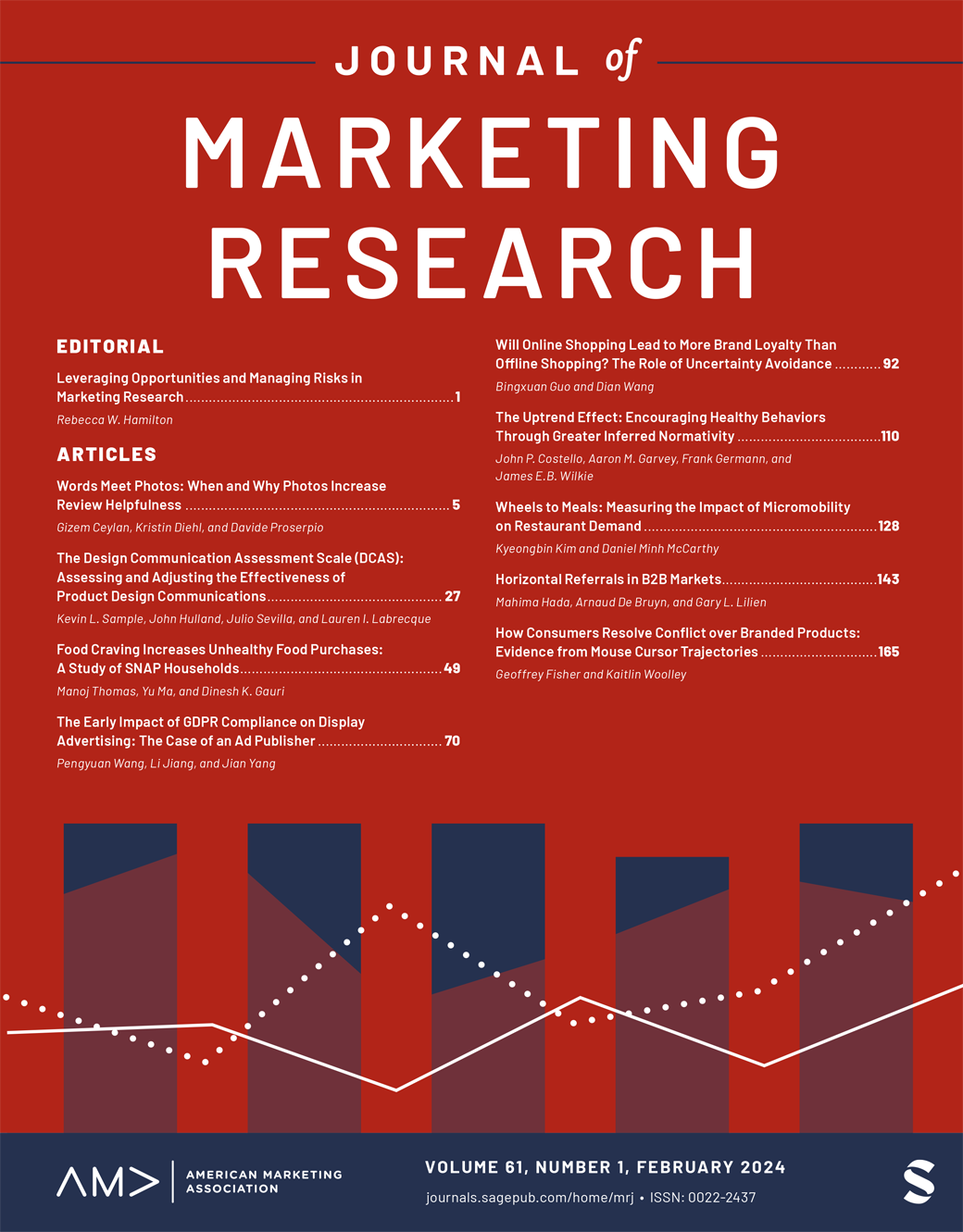快递:鲜花与蜜蜂:采用共享经济平台的空间网络效应
IF 5
1区 管理学
Q1 BUSINESS
引用次数: 0
摘要
本文通过实证分析将消费者与个人车主联系起来的汽车共享平台的时空传播。我们建立了一个消费者和提供商都采用的模型,该模型考虑到了跨地点的网络效应(因为消费者需要前往各地取车)和信息不对称(因为地图上只显示提供商的位置)。我们将其应用于平台最早阶段的数据,发现邻近性和消费者流动性在现有供应商对消费者的跨地点空间网络效应中发挥了重要作用。因此,由于某些目的地比其他目的地吸引更多的游客,并且由于当地特征的差异,目的地的额外供应对消费者在原产地采用的影响因原产地-目的地对而异,并且是不对称的。相比之下,现有消费者对提供者采用率的影响有限。通过播种实验,我们研究了初始参与者的地理分布对平台扩散的影响,发现以大城市的供应方为目标会带来最高的平台增长。我们还利用参数估计来衡量本地推广活动的长期影响,结果表明,尽管存在空间网络效应,但这种影响主要是在本地产生的。本文章由计算机程序翻译,如有差异,请以英文原文为准。
EXPRESS: Flowers and Bees: Spatial Network Effects in the Adoption of a Sharing-Economy Platform
This paper empirically analyzes the spatiotemporal diffusion of a car-sharing platform that connects consumers with individual car owners. We develop a model of adoption by both consumers and providers that accommodates network effects across locations, as consumers travel to pick up cars, and information asymmetry, as only the providers’ locations are shown on a map. We apply it to data at the earliest stage of the platform and find that proximity and consumer mobility play a significant role in the spatial network effects of existing providers on consumers across locations. Consequently, the impact of additional supply at a destination on consumer adoptions at an origin varies by origin-destination pair and is asymmetric, as certain destinations draw more visitors than others and given differences in local characteristics. In contrast, existing consumers have a limited impact on provider adoptions. Through seeding experiments, we investigate how the geographic distribution of initial participants impacts the platform diffusion and find that targeting the supply side in big cities leads to the highest platform growth. We also use our parameter estimates to measure the long-term impact of a local promotional campaign and show that it is mostly local despite spatial network effects.
求助全文
通过发布文献求助,成功后即可免费获取论文全文。
去求助
来源期刊

Journal of Marketing Research
BUSINESS-
CiteScore
10.30
自引率
6.60%
发文量
79
期刊介绍:
JMR is written for those academics and practitioners of marketing research who need to be in the forefront of the profession and in possession of the industry"s cutting-edge information. JMR publishes articles representing the entire spectrum of research in marketing. The editorial content is peer-reviewed by an expert panel of leading academics. Articles address the concepts, methods, and applications of marketing research that present new techniques for solving marketing problems; contribute to marketing knowledge based on the use of experimental, descriptive, or analytical techniques; and review and comment on the developments and concepts in related fields that have a bearing on the research industry and its practices.
 求助内容:
求助内容: 应助结果提醒方式:
应助结果提醒方式:


